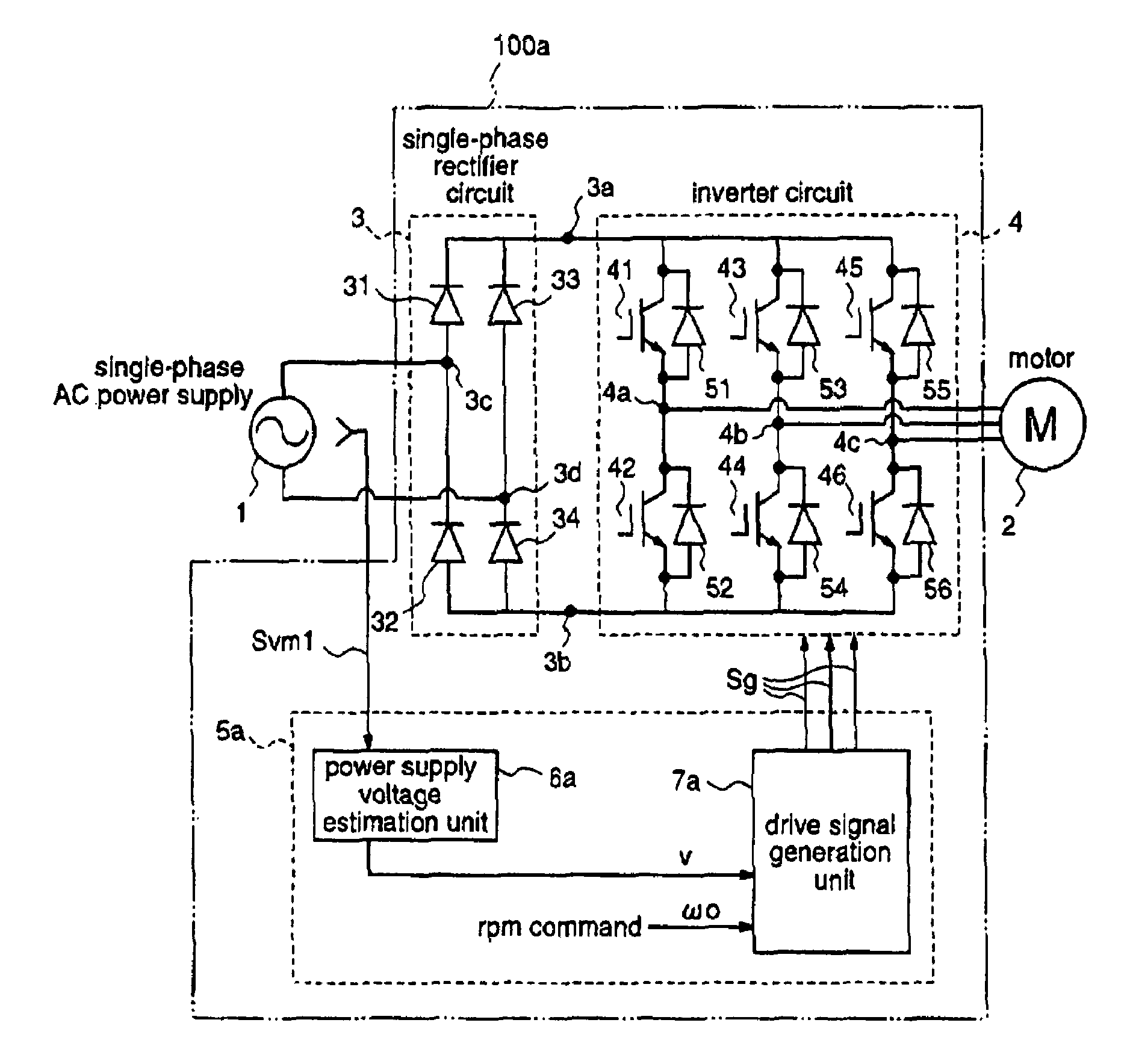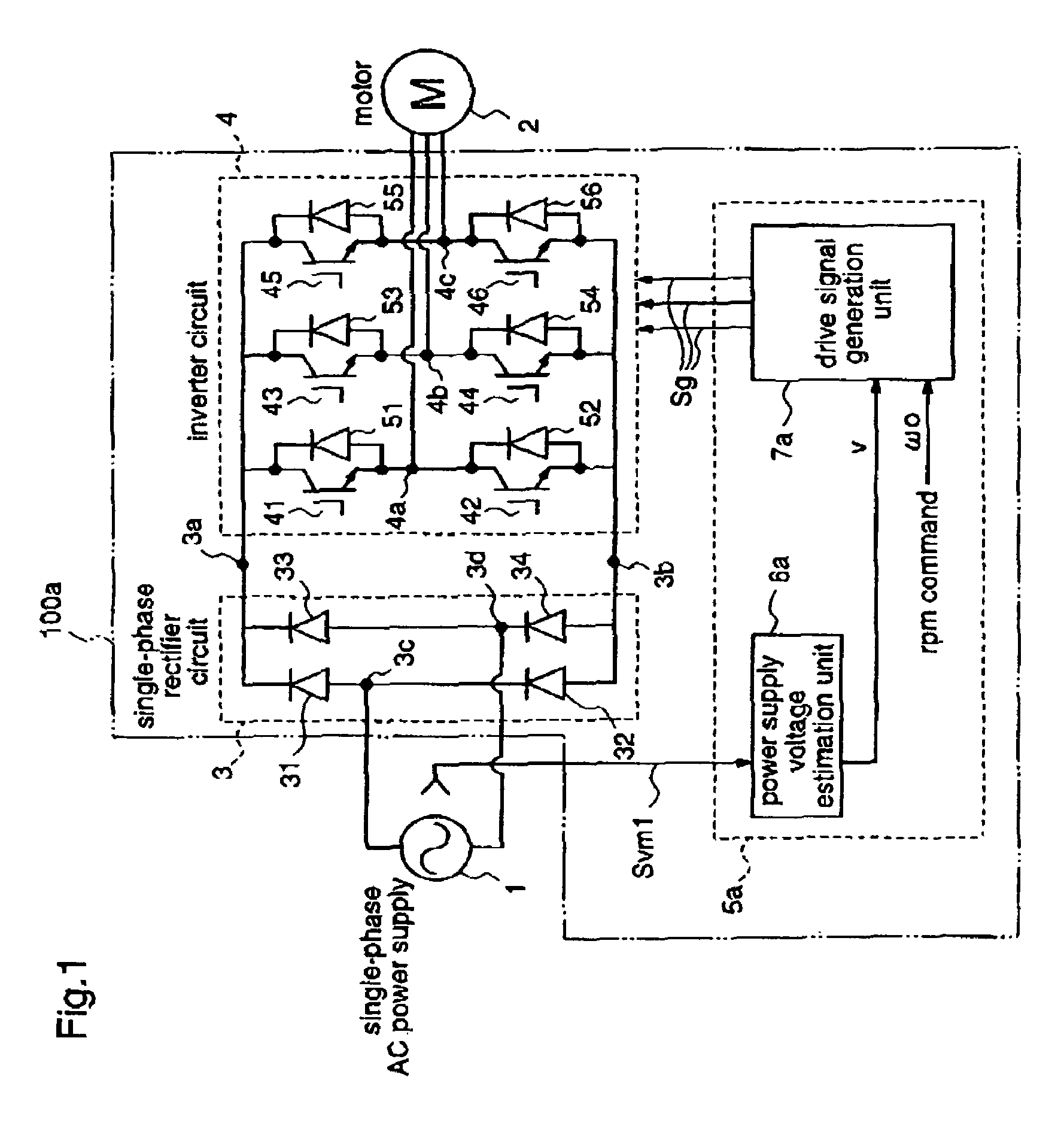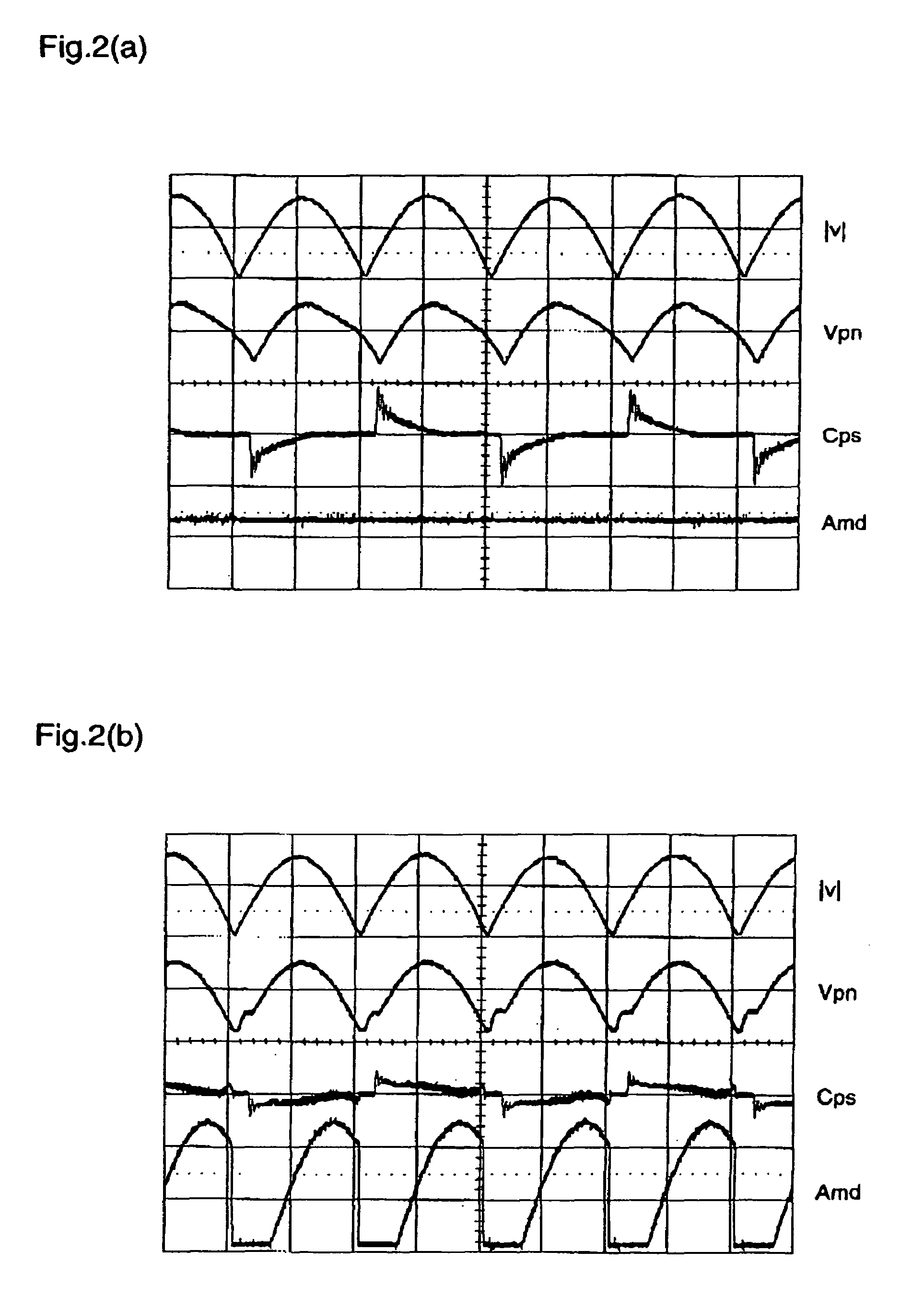Motor driving apparatus
a technology for motor driving and motor components, applied in the direction of electric generator control, dynamo-electric converter control, dynamo-electric gear control, etc., can solve the problems of motor driving apparatus not meeting the harmonics standards of the international electrotechnical commission, increasing harmonic components, and increasing harmonics. , to achieve the effect of reducing the value of capacitors, minimizing the reduction of power factor, and reducing size and weigh
- Summary
- Abstract
- Description
- Claims
- Application Information
AI Technical Summary
Benefits of technology
Problems solved by technology
Method used
Image
Examples
first embodiment
[0065]FIG. 1 is a block diagram for explaining a motor driving apparatus according to a first embodiment of the present invention.
[0066]A motor driving apparatus 100a according to the first embodiment has an input connected to a single-phase AC power supply 1, and drives a motor 2 at a desired frequency by using a three-phase DC output. In this first embodiment, the motor 2 may be any of an induction motor, a DC brushless motor, a reluctance motor, and the like. Further, it is assumed that the motor driving apparatus 100a drives a motor of a compressor for circulating a refrigerant, which is mounted on an air conditioner.
[0067]Hereinafter, a single-phase rectifier circuit 3, an inverter circuit 4, and an inverter control unit 5a, which are constituents of the motor driving apparatus 100a, will be described in detail.
[0068]The single-phase rectifier circuit 3 receives an output of the single-phase AC power supply 1, and supplies a DC voltage to the inverter circuit 4. The inverter ci...
second embodiment
[0102]FIG. 3 is a block diagram for explaining a motor driving apparatus according to a second embodiment of the present invention.
[0103]A motor driving apparatus 100b according to the second embodiment has an input connected to a single-phase AC power supply 1, and drives a motor 2 at a required frequency by using a three-phase AC output. The motor driving apparatus 100b includes a single-phase rectifier circuit 3 connected to the single-phase AC power supply 1, an inverter circuit 4 that is connected to the single-phase rectifier circuit 3 and outputs a driving current and a driving voltage to the motor 2, and an inverter control unit 5b for controlling the inverter circuit 4.
[0104]The single-phase rectifier circuit 3 and the inverter circuit 4 included in the motor driving apparatus 100b according to the second embodiment are identical to those of the motor driving apparatus 100a according to the first embodiment.
[0105]Hereinafter, the inverter control unit 5b of the motor drivin...
third embodiment
[0130]FIG. 4 is a block diagram for explaining a motor driving apparatus according to a third embodiment of the present invention.
[0131]A motor driving apparatus 100c according to the third embodiment has an input connected to a single-phase AC power supply 1, and drives a DC brushless motor 9 by a three-phase AC output at a required frequency.
[0132]Hereinafter, a single-phase rectifier circuit 3, an inverter circuit 4, and an inverter control circuit 5c that constitute the motor driving apparatus 100c will be described in detail.
[0133]The single-phase rectifier circuit 3 and the inverter circuit 4 are identical to those of the motor driving apparatus 100b according to the second embodiment.
[0134]The inverter control unit 5c supplies the inverter circuit 4 with a drive signal Sg so that the DC brushless motor 9 is driven at a rpm required by the user. The inverter control unit 5c comprises a power supply voltage estimation unit 6a, an inverter input voltage detection unit 8, and a d...
PUM
 Login to View More
Login to View More Abstract
Description
Claims
Application Information
 Login to View More
Login to View More - R&D
- Intellectual Property
- Life Sciences
- Materials
- Tech Scout
- Unparalleled Data Quality
- Higher Quality Content
- 60% Fewer Hallucinations
Browse by: Latest US Patents, China's latest patents, Technical Efficacy Thesaurus, Application Domain, Technology Topic, Popular Technical Reports.
© 2025 PatSnap. All rights reserved.Legal|Privacy policy|Modern Slavery Act Transparency Statement|Sitemap|About US| Contact US: help@patsnap.com



